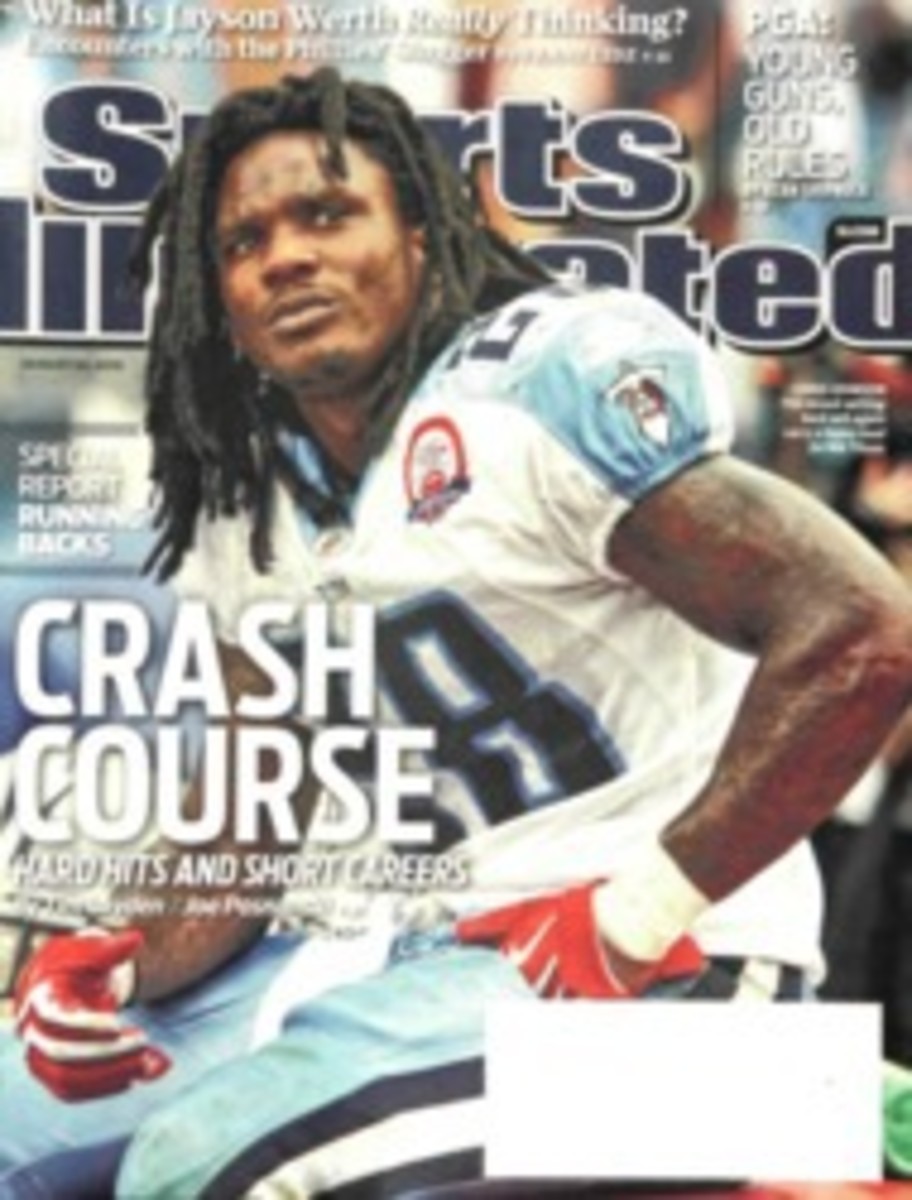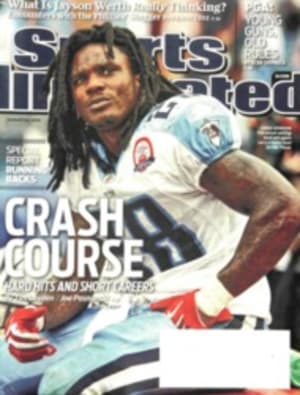
Trap Game
At the PGA Championship, Martin Kaymer held off a horde of fresh faces to win his first major, but the tournament will be remembered for a bizarre incident on the 72nd hole
The Rules of Golf make no allowances for sympathy. Ask Roberto de Vicenzo. (He signed an incorrect scorecard at the 1968 Masters, muffing a chance to be in a playoff.) Ask Ian Woosnam. (He was tied for the lead early in the final round of the 2001 British Open when an extra club was discovered in his bag, resulting in a crippling two-stroke penalty.) A golf tournament typically involves 156 players and is conducted on a playing field that sprawls across hundreds of acres. In the absence of officials hovering over every shot, the players must police themselves. Are the Rules of Golf sometimes confounding and exasperating? Sure. But they are the bedrock of the sport. Failure to follow a rule—no matter how unpopular or absurd it may be—can have calamitous results. Just ask Dustin Johnson.
You may recall Johnson, 26, as the soft-spoken, titanium-denting South Carolinian who took a three-stroke lead into the final round of this year's U.S. Open before self-immolating with an 82. Johnson was on the verge of atonement during the final round of last week's PGA Championship. Birdies on 13, 16 and 17 gave him a one-stroke lead over Martin Kaymer, 25, an ultimate driving machine from Germany, and Bubba Watson, 31, a would-be folk hero from the Florida panhandle who is basically a lefthanded John Daly, minus the vices.
On the 72nd hole Johnson whipsawed a wild drive 25 yards right of the fairway, into the swollen gallery. Whistling Straits, near Sheboygan, Wis., is a monument to artifice and excess, boasting more than 1,000 bunkers, many of which are tiny with ragged edges that bleed into the surrounding terrain. Johnson's ball settled on a small patch of sand, and the fans swarmed around it, their feet obscuring the contours of the nearby earth. At Whistling Straits' first PGA, in 2004, Stuart Appleby drew a sandy lie far from the fairway. Thinking he was in a waste area, Appleby removed grass from the sand and grounded his club, both verboten actions in an actual bunker, which it turned out he was standing in. Four penalty strokes ensued. (He would finish five shots out of a playoff.) In an attempt to avoid such confusion this time around—ha-ha!—notices were posted around Whistling Straits, including one a few steps from Johnson's locker. It read, in part, "... many bunkers positioned outside the ropes will likely include numerous footprints, heel prints and tire tracks. Such irregularities of surface are part of the game...." Johnson didn't read the memo, and neither did his caddie. Eyeing his shot on the 72nd hole, "I just thought I was on a piece of dirt that the crowd had trampled down," Johnson said. "I never thought I was in a sand trap. Maybe I should have looked at the rule sheet a little harder." He slashed a shot left of the green, chipped up and had an eight-footer for the victory, or so it seemed. He missed the putt on the low side. As Johnson shuffled off the green, he was approached by a rules official, who ushered him into the scoring area to review video of his second shot, throwing the tournament into a weird limbo.
Kaymer and Watson did not know if Johnson would be joining their playoff and retreated to the clubhouse to await a verdict. Their lives were about to change, but the vibe was oddly casual. Kaymer was spinning his cap on his finger and flirting with his companion, a spectacular blonde. Watson, self-diagnosed with ADD, bounced in place, eyeing endless replays of the Johnson affair. "Oh, it's a bunker," Watson said. "But did he ground his club? That's the $64,000 question." In the 18th-hole grandstands a chant rang out: "Let him play! Let him play!" That decision would have been popular but incorrect. Johnson had indeed grounded his club in a bunker and was thus assessed a two-stroke penalty, turning his 71 into a 73 and dropping him to a tie for fifth. "I guess the only thing worse that could have happened is if I made that putt on the last hole," he said.
Watson and Kaymer stoically played on. The PGA's playoff format is three extra holes, using aggregate score. They traded birdies on the first two holes and then, on the par-4 18th, both drove into the right rough. Watson's game is built on brawn, not brains, and he tried to muscle a hero shot through the wind to a flag protected by a creek. Splash. "I play to win," he woofed afterward. "I don't play to lay up." Sometimes it is the latter that makes the former possible. Out of the long grass, the crafty Kaymer bunted his ball short of the creek, and then from 173 yards safely reached the green, two-putting for the victory.
It was Kaymer's first major championship but not the most meaningful win of his career. That came at the 2008 BMW International, played in Munich, not far from Kaymer's boyhood home in Düsseldorf. The pressure to perform in the fatherland is such that even the great Bernhard Langer, German golf's lone deity, never won the BMW, one of the European tour's flagship events. A birdie on the 72nd hole sent Kaymer into sudden death versus Anders Hansen. Before the first extra hole Philip Kaymer sought out his brother and offered a quick pep talk: "Remember who you are playing for." Their mother, Rina, was watching on TV at home, nearing the end of a two-year battle with cancer. Martin stuffed his approach shot on the first extra hole for a triumphant birdie. He broke down while dedicating the victory to his mom, and a whole country cried with him. Rina died two weeks later.
Kaymer does not easily give away his emotions—at the conclusion of the PGA playoff it was hard to tell who had won—but he did allow on Sunday that he felt "spectacular" in victory. His gutty performance has wide-ranging implications in what has been a transitional year for the sport. Last week Tiger Woods finished dead last in driving accuracy during another wildly uneven performance in this winless season. When he arrives at Augusta next year he will be nearly three years removed from his last major championship victory, a 35-year-old with a broken personal life and a left knee that has been operated on four times. Phil Mickelson is 40 and last week disclosed he is suffering from psoriatic arthritis, the same chronic malady that prematurely chased Bob Murphy into an NBC broadcast booth. Tiger and Phil have combined to win only one tournament this year, and in this vacuum a record 12 twentysomethings have notched victories, including Rory McIlroy, 21, who at the PGA finished one agonizing shot out of the playoff. Johnson and McIlroy have long been considered the most extravagant talents among this new generation of stars; Kaymer was admired for his polished all-around game but thought to possess less upside. But put it this way: On the 72nd hole of the PGA, each of these superstars-in-waiting faced a do-or-die putt. Only Kaymer made it.
Expect him to keep building on this victory. Kaymer likes fast cars and pretty women but is grounded and committed to maximizing his potential. He was exceedingly gracious in victory, saying of the Johnson imbroglio, "It was very sad to see."
An interested observer of the PGA's wild and weird final round was Pete Dye, Whistling Straits' designer. Dye's courses are so sadistic he has been nicknamed the Marquis de Sod. He stuck around for the trophy presentation, but while Kaymer spoke, Dye's eyes lingered on the sandy hillside to the right of the 18th fairway where Johnson had met his demise. "I never thought that would be in play," Dye said, all but cleaning the blood from his whiskers. "But it is a bunker—I could have told him that. I do feel bad for that young man, but what can you do? That's golf."
For better and for worse.
Now on GOLF.com
Check out Alan Shipnuck's Hot List and Mailbag every week at GOLF.com/shipnuck
Kaymer's win has wide-ranging implications in what has been a transitional year.
PHOTO
Photograph by KOHJIRO KINNO
PENALTY BOX Johnson had no idea his ball was in a bunker when he played his second at 18.
PHOTO
JOHN BIEVER
[See caption above]
PHOTO
Photograph by KOHJIRO KINNO
MAJOR FORCE Kaymer's victory, which moved him to fifth in the World Ranking, followed top 10 finishes at the U.S. and British opens.

